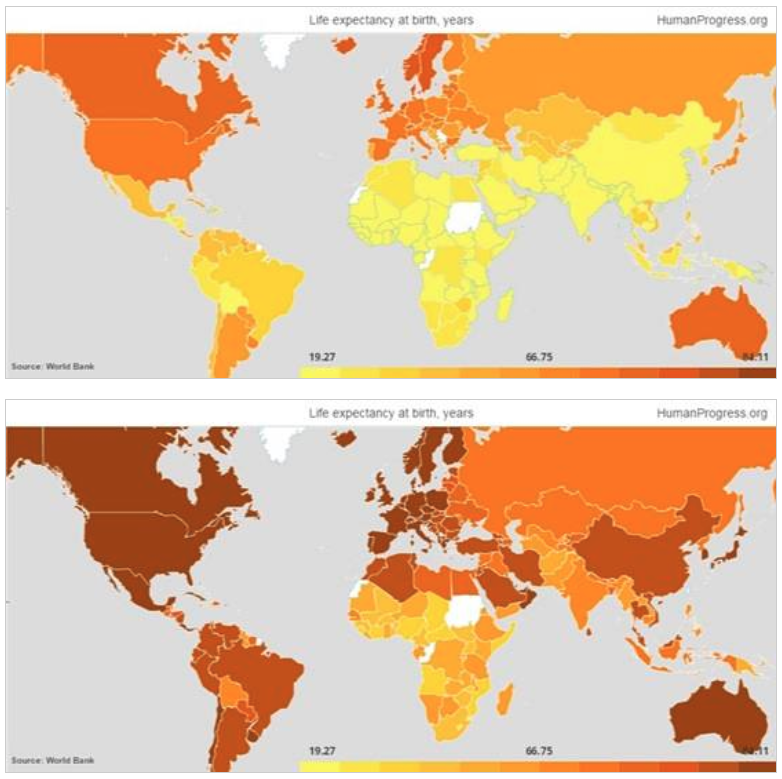Marian Tupy explains why all the Malthusian worry about overpopulation in the Third World was wrong:
Many people believe that global population growth leads to greater poverty and more famines, but evidence suggests otherwise. Between 1960 and 2016, the world’s population increased by 145 percent. Over the same time period, real average annual per capita income in the world rose by 183 percent.
Instead of a rise in poverty rates, the world saw the greatest poverty reduction in human history. In 1981, the World Bank estimated, 42.2 percent of humanity lived on less than $1.90 per person per day (adjusted for purchasing power). In 2013, that figure stood at 10.7 percent. That’s a reduction of 75 percent. According to the Bank’s more recent estimates, absolute poverty fell to less than 10 percent in 2015.
Rising incomes helped lower the infant mortality rate from 64.8 per 1,000 live births in 1990 to 30.5 in 2016. That’s a 53 percent reduction. Over the same time period, the mortality rate for children under five years of age declined from 93.4 per 1,000 to 40.8. That’s a reduction of 56 percent. The number of maternal deaths declined from 532,000 in 1990 to 303,000 in 2015 — a 43 percent decrease.
Famine has all but disappeared outside of war zones. In 1961, food supply in 54 out of 183 countries was less than 2,000 calories per person per day. That was true of only two countries in 2013. In 1960, average life expectancy in the world was 52.6 years. In 2015, it was 71.9 years — a 37 percent increase.
In 1960, American workers worked, on average, 1,930 hours per year. In 2017, they worked 1,758 hours per year — a reduction of 9 percent. The data for the world are patchy. That said, a personal calculation based on the available data for 31 rich and middle-income countries suggests a 14 percent decline in hours worked per worker per year.
And because everyone loves pictures, here’s one from an earlier article by the same author showing increases in life expectancy between 1960 (top) and 2015 (bottom):




